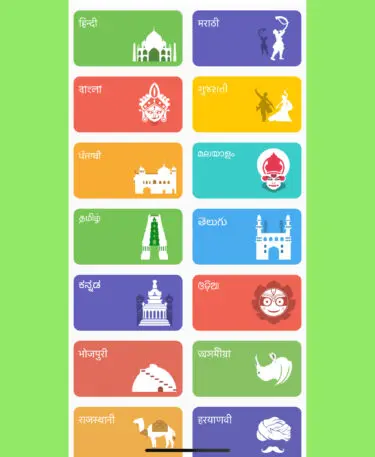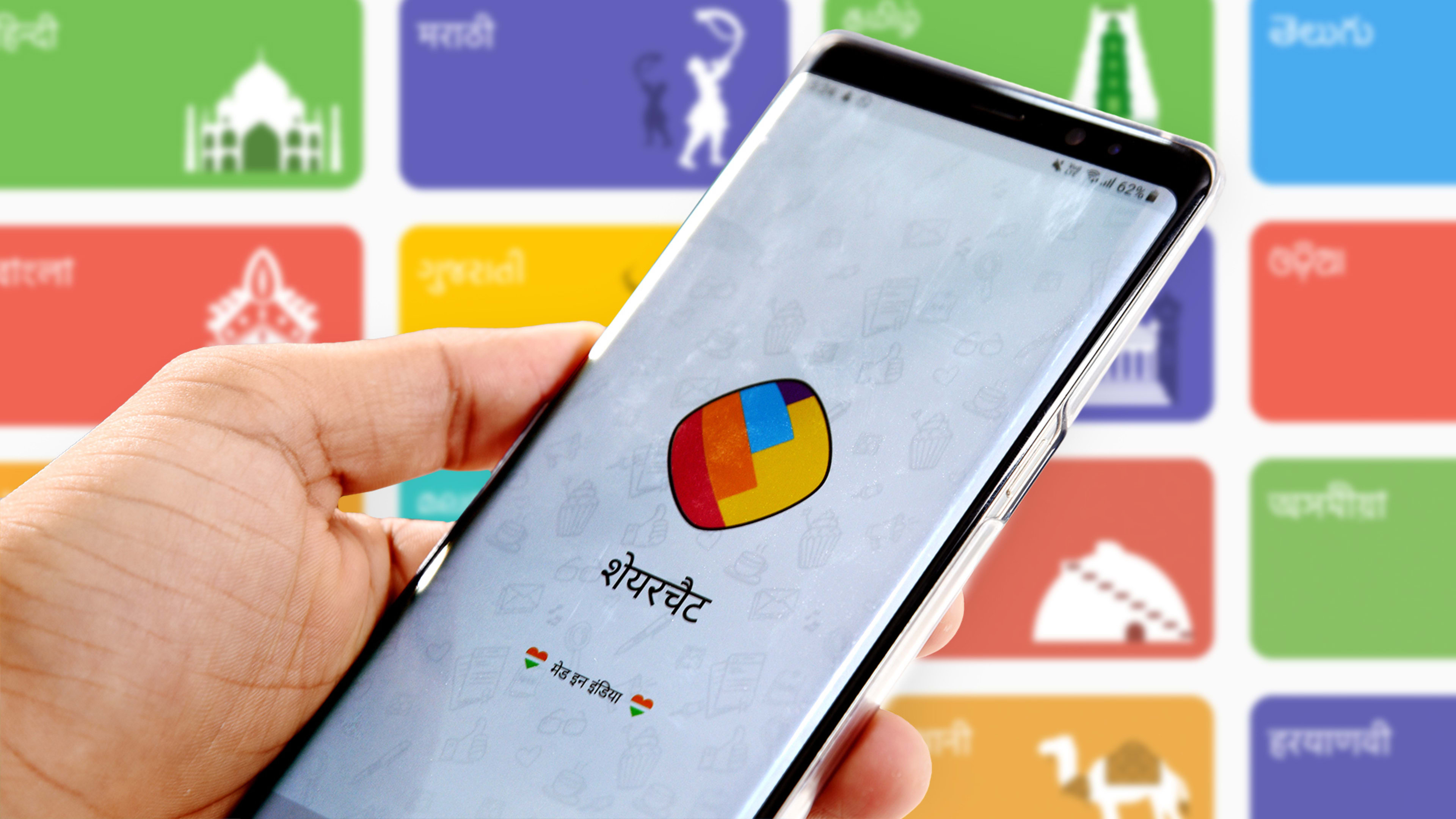Tech giants are running out of avenues for growth. In the search for their next batch of users, most of them have turned their attention to India, where more people have logged onto the internet for the first time in the last couple of years than the U.S.’s entire online population. And one startup has emerged as their hot ticket into the country’s most idiosyncratic audience: ShareChat.
Headquartered in the southern city of Bangalore, famously referred to as India’s Silicon Valley, ShareChat is an India-centric social network that supports over a dozen regional languages and offers most of the trappings you’d expect from such a service, such as a feed influenced by your interests and the people you follow; the ability to share media and text as well as comment and like other posts; and more.
ShareChat is wired to feed off of India’s soaring appetite for content. It’s designed to fuel new internet users’ obsession with information, and—even more importantly—their proclivity to forward that information on WhatsApp, the country’s most popular messaging app.
Resembling Reddit more than Facebook or Twitter, ShareChat doesn’t make you follow or friend anyone to get going. When you first log in, your home feed will be filled with posts from a wide variety of topics such as news, tabloid gossip, good-morning messages, and more—all in the local language of your choice.

But the biggest difference between ShareChat and other familiar social experiences is that it has no English-language option. That’s part of what’s made western tech giants sit up and take notice. ShareChat is the only startup Twitter has invested in (twice). It’s rumored to be on the cusp of raising more money from Google and Snapchat. At one point, talks of Google acquiring ShareChat for a billion dollars surfaced as well.
A huge, hard-to-crack market
For Google and many other western tech giants, banking on Indian startups has been a regular affair of late. Most recently, Google, Facebook, Qualcomm, and Intel poured hundreds of millions into Reliance Jio, India’s leading telecom operator. And late last year, Microsoft and Google invested in DailyHunt, a news aggregator and content app.
That’s not all. Most of these tech companies have also spent much of the last few years trying to optimize their offerings for India, where the median household income is about $3,600 and the cost of devices and internet service is a major factor in adoption. For instance, you can talk to the Google Assistant via a toll-free number—no internet needed. Amazon sells a battery-powered Echo smart speaker to cater to the country’s electricity-deficient regions. Facebook, Google, and Twitter offer their apps on inexpensive dumbphones. Netflix has a $3 mobile-only plan that lets users stream TV shows and movies in non-HD standard quality on their phones. The list is endless.
The tech giants’ enthusiasm for the Indian market is understandable. It’s the second-fastest growing internet economy and hosts over 650 million online users. Last year, Cisco forecast that this figure would surpass 900 million by 2023.
Much of the credit for India’s digital revolution can be attributed to wireless carrier Reliance Jio, which four years ago began offering cellular 4G services for dirt-cheap prices, forcing the rest of the competition to match the prices in order to survive. (Most of them didn’t, or got rolled up into mergers.) Today, a 4G plan with unlimited calls and 2 GB of data per day costs about $3 a month in India.
Further, since only about half of India’s population is online—compared to the U.S. and the UK where over 90% of people are on the internet—there’s plenty more to come and tech companies can’t afford to miss out.
The problem is breaking into the Indian market isn’t easy, especially as only 10% of its population speaks English and the majority of the country’s internet users are from non-English-speaking rural areas. Soon, nine out of 10 internet users in India are likely to communicate in local languages.
There’s where ShareChat comes into the picture. Its social network for non-English speakers has 160 million monthly active users who spend 31 minutes on the app every day, on par with competitors such as Facebook.


“[ShareChat] encompasses a massive following in Tier II, III, and IV cities and towns, one amongst the major reasons to make ShareChat a sought-after outlet for these western tech companies to add into their . . . portfolio,” says Sharma.
Talking like a local
As for ShareChat’s lack of English-language support, it didn’t start out that way. The social network initially offered an English option, but the founders noticed people who selected it were barely engaging with the service.
“Users were choosing English because of their aspirational value, not because of comfort. Indic language users showed the highest levels of engagement,” says ShareChat cofounder and CEO Ankush Sachdeva. “This propelled us to discontinue English and go the Indic language way.”

Since the Indian government cracked down on social networks for their failures in handling fake news in 2018, ShareChat says it has dramatically ramped up efforts to deal with misinformation, partnering with certified third-party fact-checkers, and actively taking down posts and accounts.
So where is ShareChat headed next? The answer to that can be found in the startup’s new research center in Palo Alto, California. Though the company has nothing to say about possible English-language support or U.S. market expansion, it’s eager to tap into the Bay Area’s talent pool as it thinks about its future.
Led by former Uber executive Gaurav Mishra, ShareChat Labs looks to experiment with machine learning technologies to take on the social network’s most pressing issues like detecting NSFW content, hate speech, and fake news and build infrastructure to power its next-gen products. One of the areas ShareChat is primarily exploring is camera tech for developing familiar social features such as augmented reality experiences, lenses, filters, stickers, live video streaming, and more, for both ShareChat and Moj.
Back home in India, ShareChat has made a series of acquisitions over the last couple of years, including a fashion marketplace, a hyperlocal information service, meme creator app, a video production and talent agency firm for influencers, and more. They paint a rather clear picture of where it’s headed: an all-encompassing social media platform that can challenge behemoths such as Facebook at a wider scale.
Until then, Sachdeva maintains that he isn’t worried about competition. “We have never been influenced by competition to design our business model,” he says. “We believe that we are in a favorable position with our understanding of the nerve of the market.”
Shubham Agarwal is a freelance technology journalist from Ahmedabad, India. His work has previously appeared in Digital Trends, HuffPost, and more. You can reach out to him on Twitter.
Recognize your brand’s excellence by applying to this year’s Brands That Matter Awards before the early-rate deadline, May 3.
